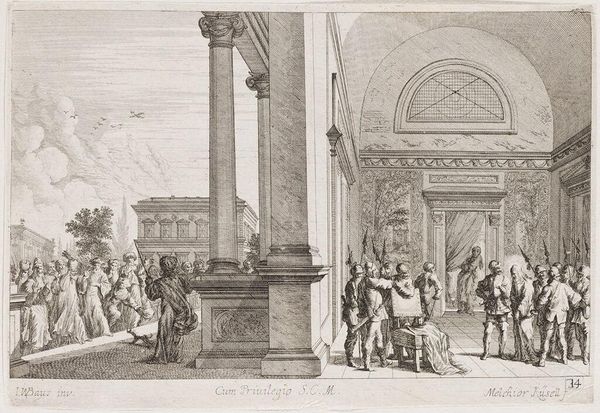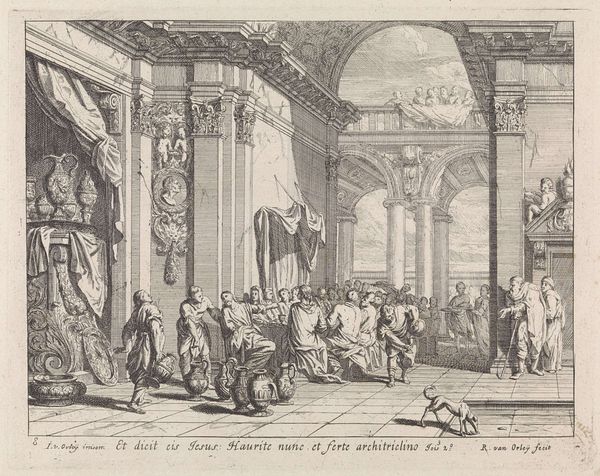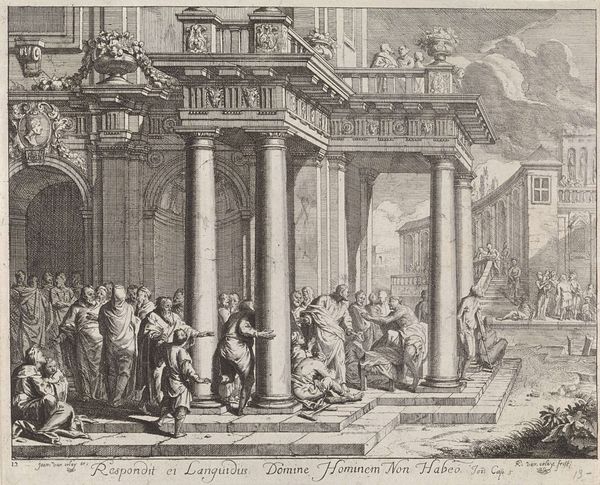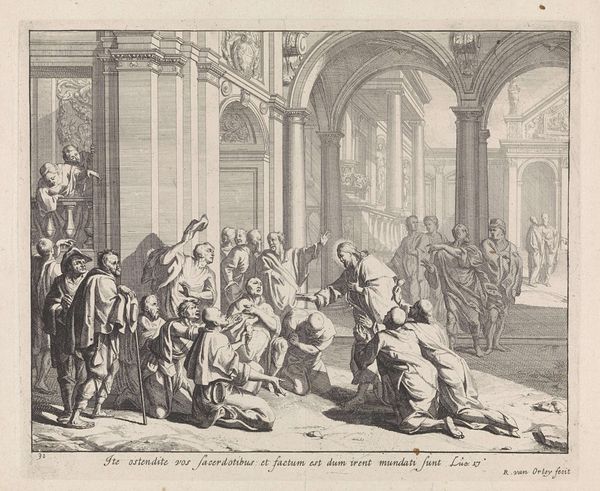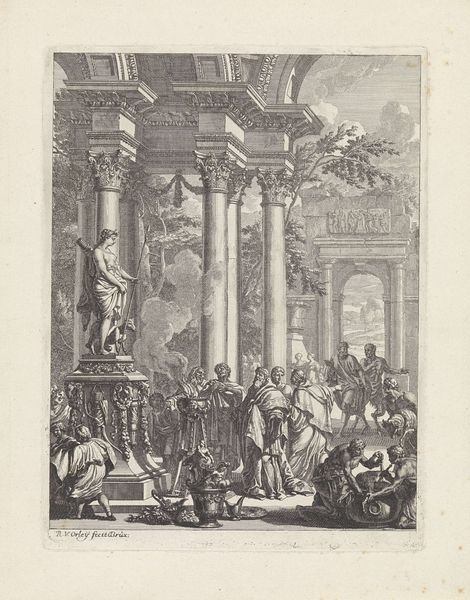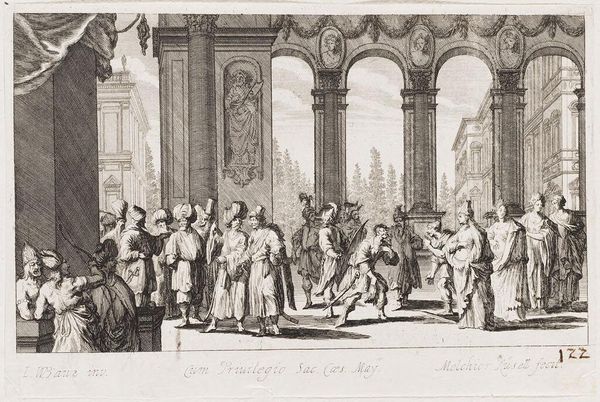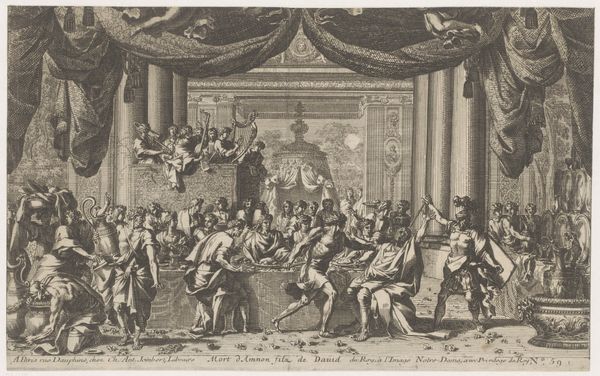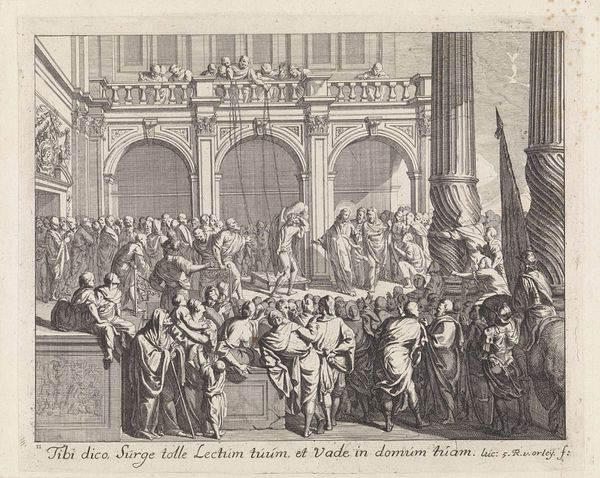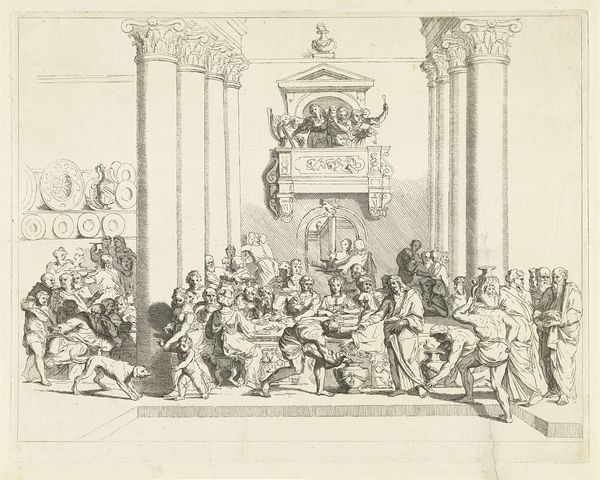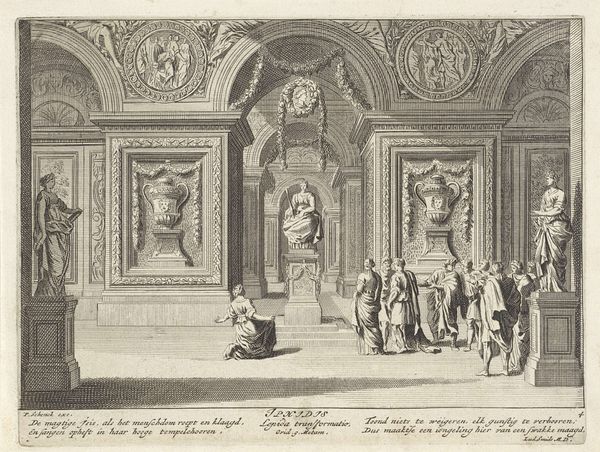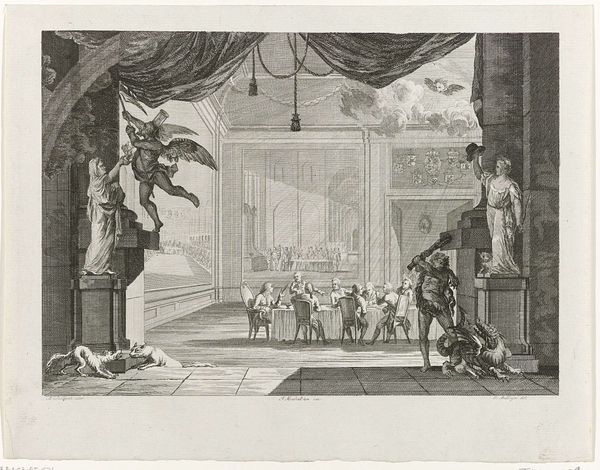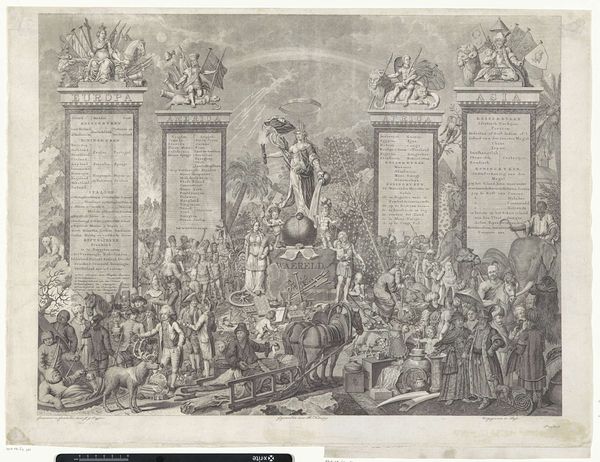
print, engraving
#
narrative-art
#
baroque
# print
#
perspective
#
figuration
#
genre-painting
#
history-painting
#
engraving
Dimensions: height 217 mm, width 265 mm
Copyright: Rijks Museum: Open Domain
Curator: This engraving is “Christ Healing the Blind Man,” completed before 1700 by Jan van Orley. Editor: The Baroque style certainly adds to its gravity, but, at first glance, the use of black and white engraving for this biblical scene conveys such dramatic tension, the architecture looms so large. Curator: It really encapsulates Van Orley's technical skill, particularly in using linear perspective to create depth within a very busy scene. We see the performative act of healing enacted in this complex moment. The body becomes a site of both suffering and potential transformation, mirroring social dynamics present even today. Editor: The symbolic language here is pretty striking. The artist makes sure to foreground the gestures of pointing, guiding, the hand placed on the afflicted’s face. Even the positioning of the monumental urn seems significant, as though its presence holds the architecture in place. Curator: Absolutely, and looking closer, you see a conscious layering of power, privilege and destitution throughout this urban landscape. Who gets to move freely? Whose gaze matters? The crowd becomes an important character, its faces turned toward a spectacle. Editor: Exactly, this is also highlighted through the contrasting composition, which guides us from darkness to light and emphasizes Christ’s action using symbolic conventions familiar to the time. Consider that the figures slowly moving towards a life-changing event become universal stand-ins, perhaps a deliberate invitation for people from diverse social and historical backgrounds to become active participants, Curator: To see one’s own body, even a broken body, within this composition as capable of redemption is truly powerful. Editor: Indeed, the choice of this biblical episode transcends the historical, offering an interpretation relevant to current conversations about social equity. Curator: Well said. This artwork urges us to look critically at the layers of historical and social forces affecting our own moment.
Comments
No comments
Be the first to comment and join the conversation on the ultimate creative platform.
